Redistribute the Crisis – Interview to Marilia Loureiro, 2017
Published on the issue 9, After Brazil, of Terremoto magazine.
Marilia Loureiro discusses with Pedro Brandão about his artistic practice which frequently crossroads with politics, economics and social platforms and devices.
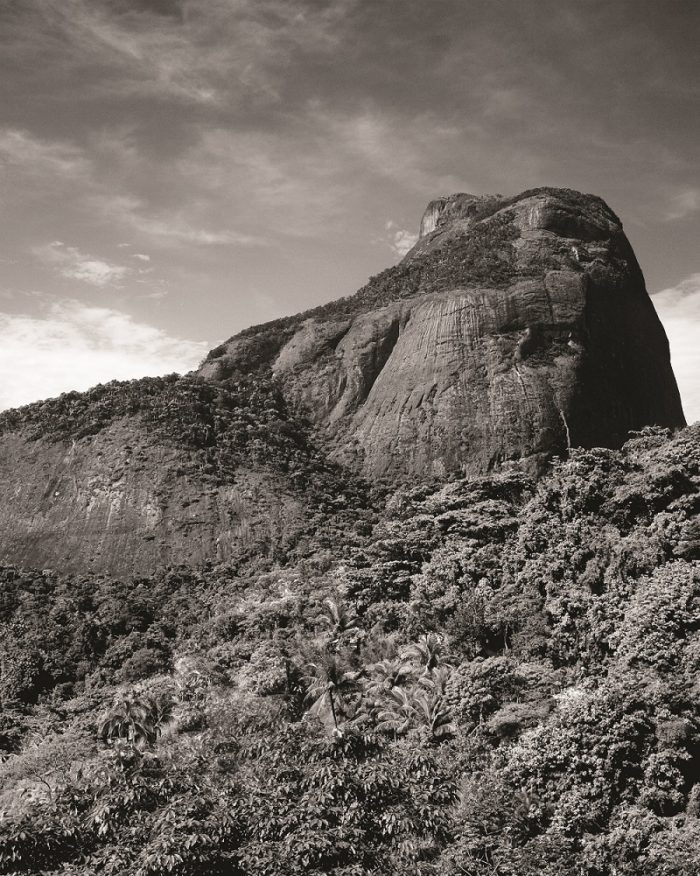
Pedro Victor Brandão. Pedra da Gávea #1, de la serie No Civilizada (2009). Impresión por inyección de tinta; 33 x 28 cm. Imagen cortesía de Sé Galería.
Redistribute the Crisis
Pedro Victor Brandão is a visual artist who works by combining a certain type of production and circulation of images, with collaborative practices, and social insertions, in a field where the speculative imagination confronts art. Departing often from the obsolescence of technological supports in dialogue with questions of the artistic tradition, Pedro produces residual images, remains that carry the metrics of the civilization devoured by the massification of barbarism. In that urgent context of radical capitalism and havoc, his work is done in layers of different systems, as he tells in this interview.
Marilia Loureiro: For some years you have collaborated in different artistic collectives linked to varied social insertions, and simultaneously followed a more individual studio based work. How was that?
Pedro Victor Brandão: I have a history of participation in collectives since 2007. I consider this as an important part of my training because these activities have always been experienced with intense debates that articulated occupations, public performances, and activations that arise with a mutual recognition of different social fabrics and terrains as a practice. I think these experiences end up also informing my work as an artist in general, including the work that is done at the studio, geared to landscape essays. The studio serves more as the connection, the manipulation, or the expression of available devices, rather than the existence of them in a physical space. My computer understands itself as a studio, and I think it’s great. It guarantees certain mobility, something that is also kept in a formless state, or a state of dictionary.
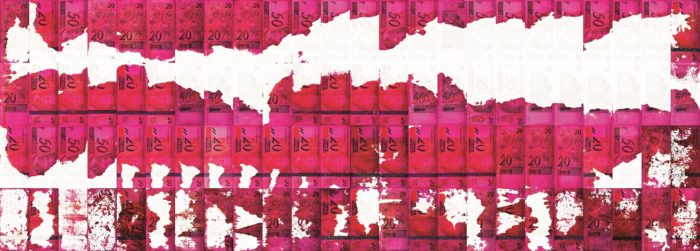
Pedro Victor Brandão. Untitled (Mosaic), from Antitheft Painting series (2011). C-print; 56 x 156 cm. Image courtesy of Sé Galería.
ML: About collective collaborations, can you talk a little bit about how some of these dynamics were, which areas they operated, what was interesting in them for you, and perhaps also tell the outspread of those encounters that have been important to your works that would come next?
PVB: Of the two longer participations I can bring the case of Laboratório Tupinagô, in which I collaborated from 2007 to 2009. It was created among artists and scientists in a coalition that had the doctor and writer Vitor Pordeus as the main articulator. From 2012 onwards, this initiative culminated in the full occupation of the Nise da Silveira Psychiatric Institute, in Engenho de Dentro (Rio de Janeiro), reformulated at that time as “Hotel da Loucura” [1] (Madness Hotel) “the first inner travel agency in Brazil”, bringing together many other collectives that bent the public health system. The project was dismantled in 2016 by the same municipality that earlier gave a breach of its sick machine. There was a change of secretaries and a new management simply exonerated one of the few collectively and artistically-run health projects in the city. From 2007 to 2012 I also participated in several actions of OPAVIVARÁ! [2], where we shared many meetings, meals, trips, and delirium. Another call for action was made to me by Pierre Sousa da Fonseca (artist), from Ajuricaba, when he proposed a mirroring urban intervention announcing the cutting and sale of urban trees for export, as an ecological counter-campaign under the name of a fictional company, Vecana [3], directed by the group. From 2013 to 2015 I worked for Agência Transitiva [4], which also declared itself as an institutional body (or constitutional, in some cases).
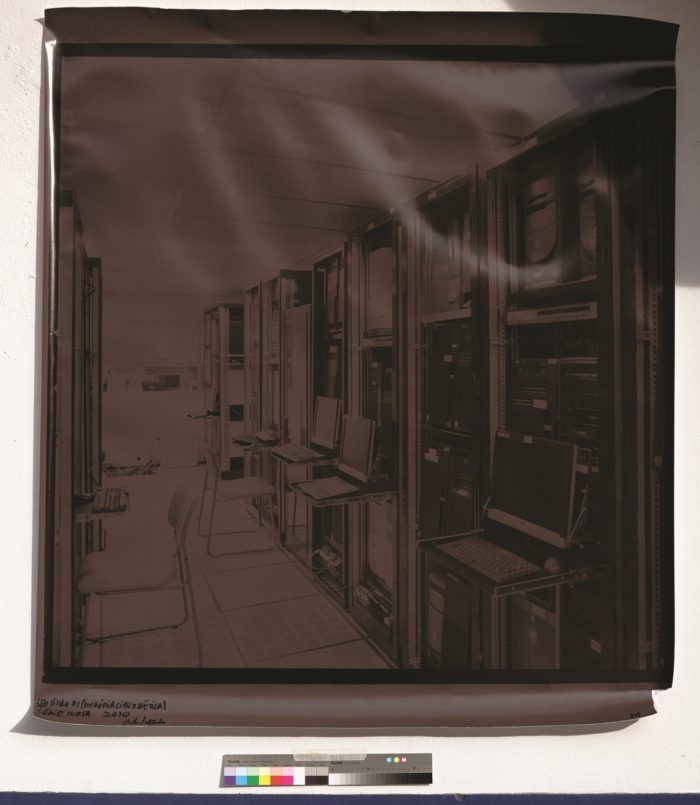
Pedro Victor Brandão. Sin Título #1.1 (Memoria Cibernética), de la serie Corta (2010). Impresión en gelatina y plata no fijada; 150 x 127 cm. Imagen cortesía de Sé Galería.
ML: Why did you declare yourselves an institutional or constitutional body? How did this affect your practices?
PVB: I think it was because we were looking for the exercise of a juridical institution of the future, that is to say, a collective body that emerges by adhesion and happens to realize in its experimental practices other types of contracts. We financed some trips, residences and publications; we established networks of exchanges with other groups, even if seeing the limit of “collectivisms”, where dissolution of authorship sometimes implies also in the dissolution of responsibility. I did some collections and data analysis with them, and in one of the last works, Nós dissemos sim (We Said Yes), we filed into Bitcoin’s blockchain, [5] an agreement signed between us, the director of Parque Lage School of Visual Arts (the writer and art critic Lisette Lagnado), and the curator of the exhibition (Bernardo Mosqueira). It was a text embedded within a financial transaction that pointed to a non-work, such as the realization of a non-project for the collective exhibition “Encruzilhada” (Crossroads), in 2015. In this occasion, we were able to publicly challenge some methods of the art system, dealing with the fields of translation, the place of precarious work, appropriation, self-organization and the very critical nature of what we call “collaboration”. In all these cases, I see the echo of the practice of “performing the institution”, as Andrea Fraser says, as if we could redistribute the crisis to the exhibition visitor.
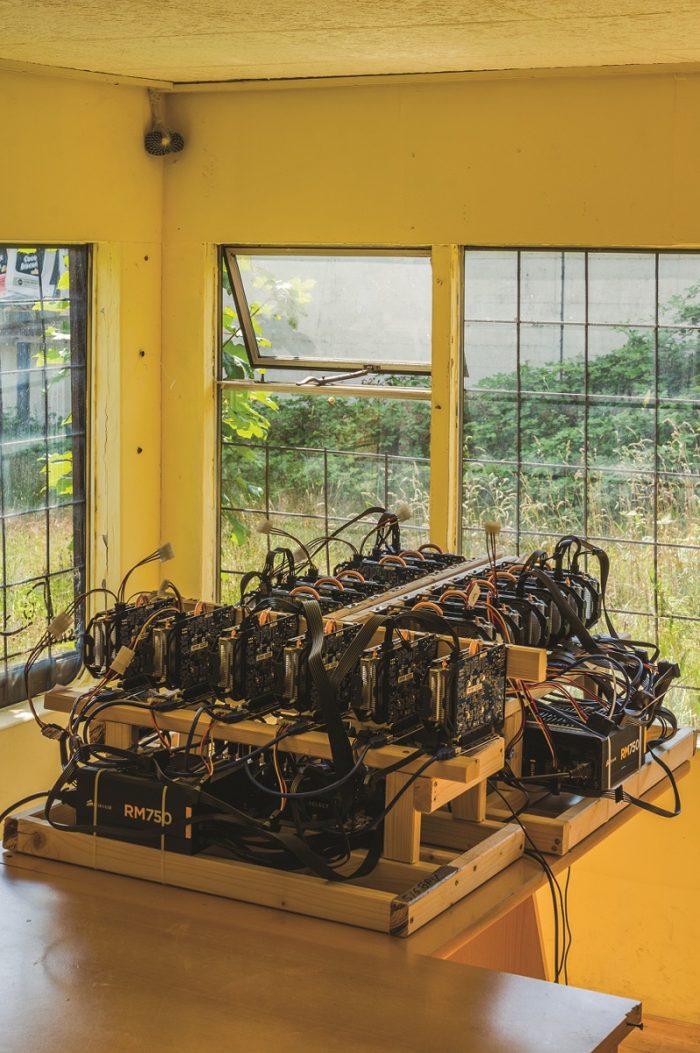
Maíra das Neves & Pedro Victor Brandão. Gigantes Mineros #1, #2 y #3, from the series the þit. Financial sculptures (2014). Variable dimensions. Image courtesy of Sé Galería.
ML: And these processes of collaboration followed, to a certain extent, in other frequent partnerships, such as the works done in the Ruhr region in Germany, after the invitation of the collective KUNSTrePUBLIK and in partnership with the artist Maíra das Neves; in Panama with the curator Beatriz Lemos through the Lastro platform; and in Porto Maravilha, with the researcher Laura Burocco. In all three cases, they were works that stress one of the most operative forms of capital today–speculation. Can you tell us about these works and about how the matter of speculation appears in each of them?
PVB: In partnership with the artist Maíra das Neves we developed the þit [6] as a project, creating a self-financing model based on cryptocurrency-mining (like Bitcoin, but using other algorithms as well). This happened during the Archipel in√est project, which was set up as a laboratory bringing together various researchers after a curatorial proposal of the collective KUNSTrePUBLIK that sought practices addressing the post-industrial Western world. For five months we occupied a semi-abandoned land in the Ruhr region, where the main economic activity until the 1970’s was mining. We developed a prototype of a self-sufficient system to produce financial and natural resources (understanding time also as a natural resource), by installing three mines that generated bitcoins and this enabled the creation of a common fund for this temporary park and its activities, including the payment of rent with the landowner, in fractions of cryptocurrency, in addition to some workshops and public events. In the end, we launched an open call so that two other initiatives in the region could each have a financial sculpture, extending the experimentation of the logic that we introduced beyond the project itself. Curiously, the land was in front of the city hall of Oer-Erkesnhwick, and the mayor came in the public presentations. In one of them, two actors read a legend created by us, but supposed to have been recovered in the public archive of the city, it was an almost solemn moment, we served farofa with sausage. I feel an effect of the conversations on technoxamanism, technomagic and technoprimitivism in several publications and conversations (especially with Fabi Borges, Giseli Vasconcelos, Adriano Belisário and Bruno Vianna) in which it is possible to recover in artistic practices another sense for “speculation”, allowing works not only to carry the critique of a current system, but also glimpses beyond-dystopia, perceiving therein a change in the social role of the artist. In Panama, accompanied by curator Beatriz Lemos, I decided to look closely at some of Odebrecht’s construction works, perhaps as a culmination of the last 50 years of Brazilian developmentalism. We have seen that there is a repetition of this formula in which the political class caters to the interests of capital, which guarantees shielding. This mix will always result in a purge of rights, currently at an obscene stage of the capitalist mode of production. Making unsolicited social listenings remains an essential condition for producing art and knowledge today. From there, I brought a film-essay that appropriates words written by Norberto Odebrecht in 1968 in one of his administrative technology manuals. They serve as a plot for the speculative landscape and the loose fiscal legislation of that country which, in its creation (1903), already had the banking group JP Morgan as official fiscal agent. I did a self-surveillance exercise, too, with a trail camera (sensitive to movement and heat), also commenting on a state of mass surveillance to which we are all subjected. I have put these works together in a series, A Quinta Renda (The Fifth Income), yet to continue for some years. I want to visit Nicaragua, where the Chinese are making another inter-oceanic canal there. This end of a political-economic class also appears in the Futuristic and Speculative Circuit of Disrespect for African Heritage, Urban Oblivion and Rotting of Society, held with Laura Burocco and the meeting of a group of 30 people for a critical walk commenting the situation of the port of the city of Rio de Janeiro, currently the largest public-private partnership in Latin America, called “Porto Maravilha,” and still not investigated judicially in this network of processes that involves Brazil now. We created a series of six photo-collages from spaces that were brutally sanitized by the revitalization projects linked to the Olympic games. Public lands were sold in a Ponzi scheme. Like in Greece, mega-events have established a complex arrangement that is now completed in a crisis. Losses are being socialized again and profits evaded in market manipulations. The images bring these landscapes into a state of “post-olympicaliptic” emergency, signaling the loss of the right to the city as one of the key elements for the consolidation of a discourse that is based on innovation, on the “creative economy” and social cleansing that fits the interests of a ‘sim-city’ financial elite.
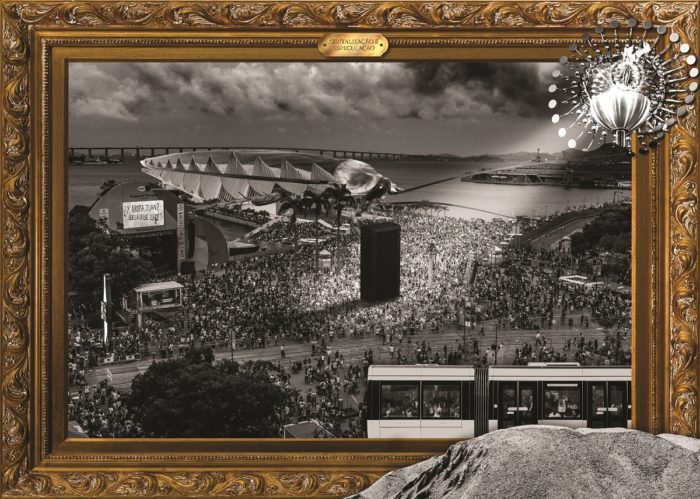
Laura Burocco & Pedro Victor Brandão. Plaza Mauá, de la serie Circuito Futurístico y Especulativo de la Falta de Respeto con la Herencia Africana, del Olvido Urbano y de la Putrefacción de la Sociedad (2016). Impresión offset; 33 x 50 cm. Imagen cortesía de Sé Galería.
ML: In these and other works, you unfold and extend the meanings of recurring terms found in the economic and political vocabulary, as in language related to the field of visual arts–as it’s the case of speculation (speculum, speculi) transparency, opacity. This procedure brings to your work issues both related to the composition of the image as landscape, but also related to the hegemonic mechanisms of control, manipulation and distribution of these same images. Can you comment on these movements and overlaps in your work?
PVB: It all comes from a desire to achieve visual and critical repertoire from the realities I experience. This involves writing, reading and the need to put visuality into a check, a take on the corrupting role that the images bring. Overlaps occur at the technical and formal level, bringing some social alert. The problem I have posed is to try to make these moments of radical transparency work in favor of a permanent transformation of some structures. To disagree with the opulent uses of information is also to claim a space of opacity, wherein possibilities of interference, chaos, and subversion arise; a fracture through which another light gets in. This is manifested, for example, in the work Sociedade Brasileira, parte II (Brazilian Society, Part II), when the expansion joint on a wall is juxtaposed to an analogue data leak that corresponds to sensitive information about the articulation web that permeates the Brazilian 1%, with their addresses, marital relations and consumed services. This work should soon circulate as a torrent file, so that I’m not the only one able to manipulate this data. There is a path that tries not only to exhaust the photographic act, but other black boxes, too, such as algorithmic governance, mechanisms of indebtedness and selective urbanism. In this last exhibition I made a comment on the idea of “toxic image” combined with the poetics of leak, [7] in a period in which social networks seem to be the best metaphor for the Information Retrieval Office from the movie Brazil, by Terry Gilliam, quoted in the editorial of this issue of Terremoto.
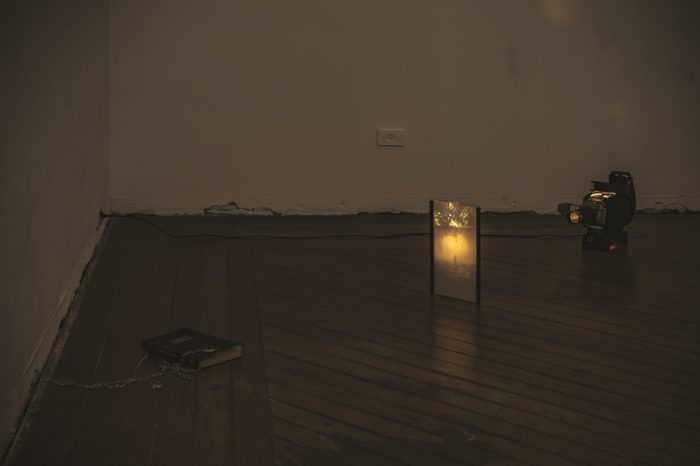
Pedro Victor Brandão. Brazilian Society, part II, from Prepared Screen series (2016). Photo-installation. Variable dimensions. Image courtesy of Sé Galería.
ML: Since 2013 we are living in Brazil an important moment of political upheaval, which has reverberated and caused impact in practically all spheres of our daily life, including, of course, our professional thinking/making, linked to the field of visual arts. So I wanted to ask how your work was affected by these events? What are the urgent questions that this current context raises for you?
PVB: Yes, 2013 unleashed something strong in the political imagination, which still continues to reverberate. 2016, however, marks in Brazil the end of a democratic process with the parliamentary and juridical coup. The selected punitivism was installed, mainly driven by centralized media and an untouchable judiciary. The remains of a political class buoyed by capital try to contain the effects of the investigations and then we see an art-rebound: the exhibition “Obras sob a Guarda do MON” (Works under the MON) continues in poster, since the Oscar Niemeyer Museum started to receive works of art seized by the Federal Police over several investigations. Can you say this is not a curatorial work? I don’t know. As we talk, a series of leaks is cracking the allied base of the illegitimate government because clearly a recording shows a Senator negotiating the end of the current investigations with the director of the largest conglomerate of production and sale of animal protein of the world. “The calamity is public, the scãndal is capital,” says Traplev and I totally agree. In January, the federal government released by mistake all official social media passwords in a tweet. They also announced that the government is no longer proceeding with the preferential use of open source software in the public system. Most banks use Windows XP, particularly vulnerable to botnet attacks–such as WannaCry which a few days ago hit more than 70 countries including Brazil, where data was hijacked by forced encryption, requiring ransom from institutions like the Public Prosecutor’s Office of São Paulo, and the Ministry of International Relations, in Brasília. This event puts cybernetic memory in check and in a sense makes an invitation to decentralization. I realize that the financial market and the media exercise an indirect representative system better than by the citizens, it can only end up by its own lack of intelligence, before a total insurrection lands (and it’s landing). The acceleration of these and other democratic crises affect the practices that I develop by their content of emergency. There is a poem by Iacyr Anderson de Freitas that sometimes comes as a loop in my head. It’s called João Cabral Visits the Municipal Ccemetery of Juiz de Fora, and ends up like this: “Between the square and the podium, thus, the bargain is made: a trade of losses that with losses is won.”
Notes:
1. http://upac.com.br and http://upac.academia.edu/vitorpordeus
2. http://opavivara.com.br
3. http://vecana.webnode.com.br/
4. http://bit.do/agetrans
5. Blockchain is the main disruptive elemente behind Bitcoin’s financial techonology. It’s an open information verification system, working as a public ledger, where parties involved in a contract do not need to have a trusted bond between them, forming a platform for distributed consensus. The image of a transparent vault is often used to describe this mechanism that is a threat to any type of centralized system.
6. https://thebpit.org
7. https://terremoto.mx/prepared-screen
